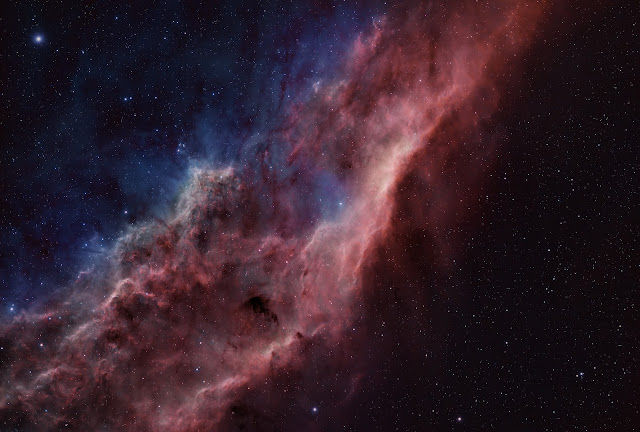The long winter nights have gone but some of those iconic targets are not forgotten, had a reprocess on this winters attempt of the Rosette Nebula. I think over the years my processing style has changed and improved, I like a more natural colour palette. Saying that I am looking at a full mono set up with LRGB HSO filters. Just 45 minutes worth of data here captured using the Optolong L-enhance filter in my ZWO filter draw.
Friday 14 May 2021
Rosette Nebula.
The Horsehead Nebula
The winter months were not great from my location, that and the bloody tree facing due south, I only managed just over an hour on this iconic target, it beats too the image I took when featured on the Sky At Night Programme when Pete Lawrence visited our Society Breckland Astronmoical Society to celebrate the 25th Anniversary of Hubble. New image at top. I know heavily cropped but an amazing difference in camera technology and processing technique.
Wednesday 12 May 2021
M97 & M108 The Whale & The Surfboard.
The owl and the surfboard. I have previously mentioned the astronomical names of objects often resemble what they look like. Two prime examples are M97 the Owl Nebula & M108 the Surfboard Galaxy. The Owl is a planetary nebula, (not a planet) but the violent death of an exploding star, ejecting shells of gas & material into space, Still expanding some 8000 years later at 35km per second, can you see the owls eyes? M108 the Surfboard Galaxy lies some 2000 times more distant at 26 Million light years. Another example of a Galaxy viewed edge on from our perspective and uncannily resembling a surfboard.
Tuesday 11 May 2021
M106
California Nebula
NGC1499 The California Nebula. Discovered in 1889 The California Nebula is an emission nebula in the constellation of Perseus, currently v...

-
Object: M45Type: Open Cluster Distance: 380Light Years (Approx) Constellation: Taurus Date : 27th October 08 Equipment: William Optics M...
-
Without doubt the finest of globular clusters visible in the northern hemisphere. Located outside the plane of our galaxy and some 25,000 li...










